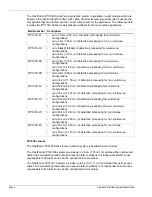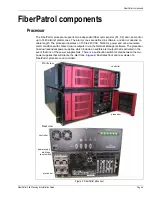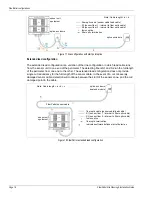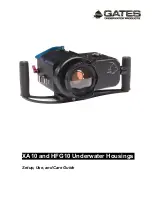
Site survey
FiberPatrol Site Planning & Installation Guide
Page 19
Site survey
The first step in installing a FiberPatrol fence protection system is to conduct a detailed site survey.
The survey assesses the site conditions to determine the specific installation requirements
including the fence type, fence condition, fence length, zone layouts, sensor cable route, non-
detecting lead cable length, length of sensor cable required to cover the perimeter, and the
location for the electronic components.
Create a scale drawing of the site (e.g., CAD drawings), which indicates the locations of:
•
fences (include type and condition)
•
gates (include type and size)
•
buildings and other structures
•
roads, driveways, sidewalks, paths, parking areas
•
trees, bushes, dense vegetation (near perimeter)
•
location of sensor cable
•
other existing or planned security devices (e.g., CCTV cameras, security lighting, etc.)
Fences
The fence must be properly installed, maintained, and tensioned, to provide effective intrusion
detection with FiberPatrol. The fence should be uniform in height and quality, and should be high
enough to present an effective barrier against climb-over intrusions. It is also recommended that a
climb-over barrier, such as barbed wire or concertina, be installed along the top of the fence. The
condition of the fence is critical to the efficient operation of the FiberPatrol sensor system. Breaks
in the fence structure, or slack portions of the fence fabric, will inhibit the transmission of the fence
vibrations to the sensor cable. Poor fence conditions can also cause metal on metal contact noise
that will result in nuisance alarms.
Chain-link fences
The chain-link fence fabric should meet the following specifications:
•
maximum range of deflection 10 cm (4 in.) when a 22.5 kg (50 lb) force is applied
perpendicular to the center of a panel (pushing and pulling) (based on 3 m, 10 ft. post spacing)
•
minimum height of 2.4 m (8 ft.) with climb-over deterrent hardware securely mounted on top
Weld-mesh fences
A typical weld-mesh fence section consists of 3 mm (0.1 in.) diameter steel wire welded into a grid
configuration, with horizontal spacing differing from the vertical spacing. These fence sections are
secured to fence posts and to the adjacent fence panel sections. The sections of weld-mesh fence
are either welded together or connected using clips, bolts or rivets. The minimum recommended
Note
Fences used in conjunction with the FiberPatrol sensor must meet
industry standards for security fences.
Note
Any fence movement which can cause metal-to-metal contact is a
potential source of nuisance alarms.
















































